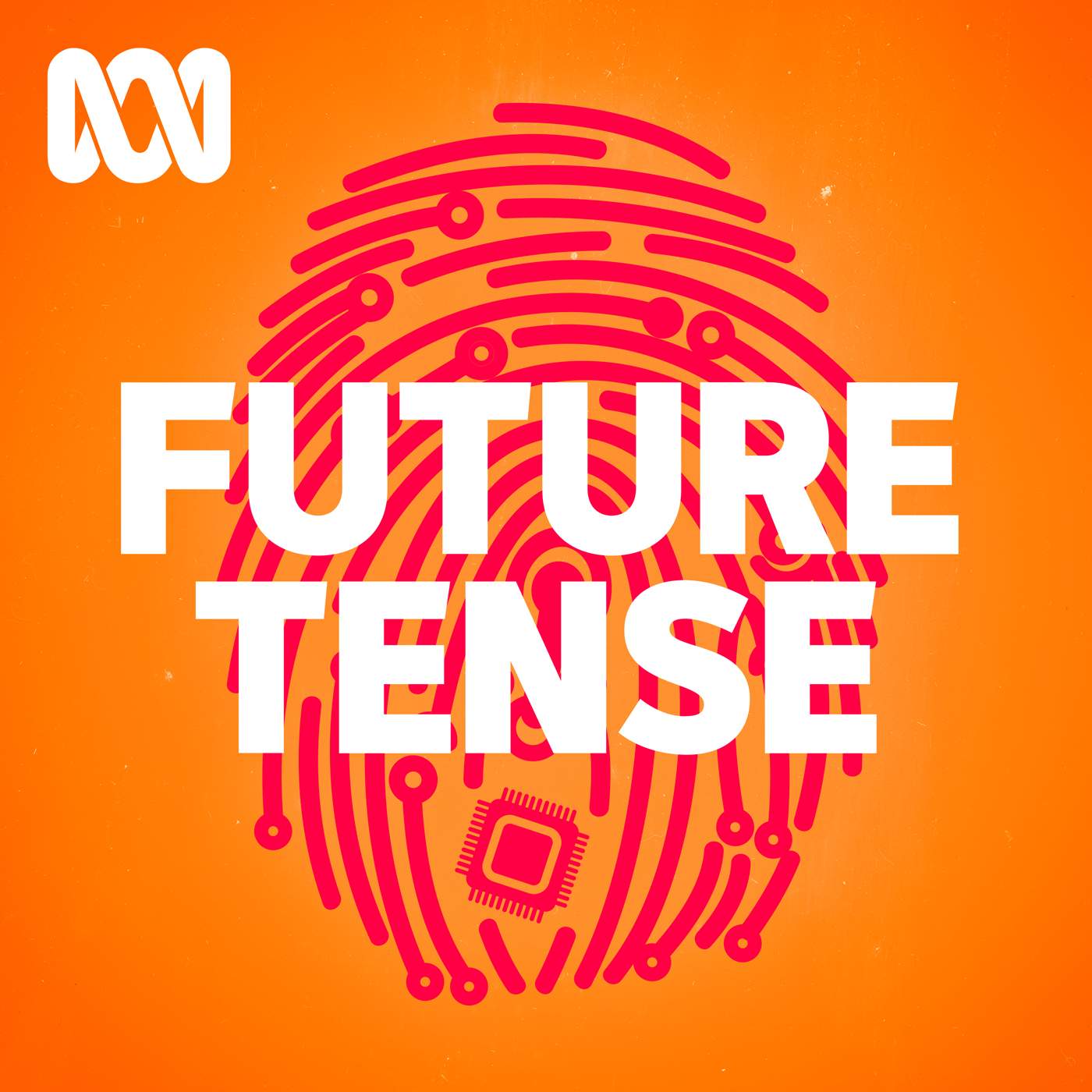
Heliox: Where Evidence Meets Empathy 🇨🇦
Join our hosts as they break down complex data into understandable insights, providing you with the knowledge to navigate our rapidly changing world. Tune in for a thoughtful, evidence-based discussion that bridges expert analysis with real-world implications, an SCZoomers Podcast
Independent, moderated, timely, deep, gentle, clinical, global, and community conversations about things that matter. Breathe Easy, we go deep and lightly surface the big ideas.
Curated, independent, moderated, timely, deep, gentle, evidenced-based, clinical & community information regarding COVID-19. Since 2017, it has focused on Covid since Feb 2020, with Multiple Stores per day, hence a sizeable searchable base of stories to date. More than 4000 stories on COVID-19 alone. Hundreds of stories on Climate Change.
Zoomers of the Sunshine Coast is a news organization with the advantages of deeply rooted connections within our local community, combined with a provincial, national and global following and exposure. In written form, audio, and video, we provide evidence-based and referenced stories interspersed with curated commentary, satire and humour. We reference where our stories come from and who wrote, published, and even inspired them. Using a social media platform means we have a much higher degree of interaction with our readers than conventional media and provides a significant amplification effect, positively. We expect the same courtesy of other media referencing our stories.
Heliox: Where Evidence Meets Empathy 🇨🇦
Long Covid Global Stats 2025: How We Normalized Mass Disabling
So instead, we'll continue to normalize the abnormal, to treat a 36% chronic illness rate as just another statistic, to let individuals bear the cost of collective failures. We'll keep moving, keep consuming, keep pretending that the bodies breaking down around us are isolated tragedies rather than predictable outcomes of predictable choices.
The numbers don't lie. But the people who interpret them for public consumption certainly do.
Thirty-six percent. Remember that number when they tell you the pandemic is over. Remember it when they ask why productivity is down, why healthcare costs are up, why so many people seem tired all the time. Remember it as evidence of what happens when societies choose commerce over community, profit over people, convenience over care.
Songs: One in Three: You and You and Me
This is Heliox: Where Evidence Meets Empathy
Independent, moderated, timely, deep, gentle, clinical, global, and community conversations about things that matter. Breathe Easy, we go deep and lightly surface the big ideas.
Thanks for listening today!
Four recurring narratives underlie every episode: boundary dissolution, adaptive complexity, embodied knowledge, and quantum-like uncertainty. These aren’t just philosophical musings but frameworks for understanding our modern world.
We hope you continue exploring our other podcasts, responding to the content, and checking out our related articles on the Heliox Podcast on Substack.
About SCZoomers:
https://www.facebook.com/groups/1632045180447285
https://x.com/SCZoomers
https://mstdn.ca/@SCZoomers
https://bsky.app/profile/safety.bsky.app
Spoken word, short and sweet, with rhythm and a catchy beat.
http://tinyurl.com/stonefolksongs
Curated, independent, moderated, timely, deep, gentle, evidenced-based, clinical & community information regarding COVID-19. Since 2017, it has focused on Covid since Feb 2020, with Multiple Stores per day, hence a large searchable base of stories to date. More than 4000 stories on COVID-19 alone. Hundreds of stories on Climate Change.
Zoomers of the Sunshine Coast is a news organization with the advantages of deeply rooted connections within our local community, combined with a provincial, national and global following and exposure. In written form, audio, and video, we provide evidence-based and referenced stories interspersed with curated commentary, satire and humour. We reference where our stories come from and who wrote, published, and even inspired them. Using a social media platform means we have a much higher degree of interaction with our readers than conventional media and provides a significant amplification effect, positively. We expect the same courtesy of other media referencing our stories.
This is Heliox, where evidence meets empathy. Independent, moderated, timely, deep, gentle, clinical, global, and community conversations about things that matter. Breathe easy. We go deep and lightly surface the big ideas. Welcome to the Deep Dive. We're here to cut through the noise, really pull out those essential insights you need to be properly informed. And today we're diving deep into a topic that, well, it just keeps resonating globally. Long COVID. This isn't just some fading echo of the pandemic, is it? It's a real persistent evolving health challenge. Affects millions.
Speaker 2:Absolutely. It's far from over for many people.
Speaker 1:And our focus for this particular Deep Dive is, well, it's a really comprehensive piece of research. titled Global Prevalence of Long COVID, Its Subtypes and Risk Factors, an updated systematic review and meta-analysis.
Speaker 2:Quite a title.
Speaker 1:It is. Published just recently, August 30, 2025, in Open Forum Infectious Diseases. And the authors, you know, Yeren Ha, Tian Gu, Zuchini, Zhu Shi, Megan Ranney, Bromar Mukherjee, it's serious work building a real foundation here.
Speaker 2:Definitely a solid piece of research, yes.
Speaker 1:So our mission today really is to distill the most crucial findings from this huge study. Think of it like your shortcut, your express link to understanding long COVID's actual global reach.
Speaker 2:Yeah, what it really looks like worldwide.
Speaker 1:Exactly. And it's different forms, the subtypes, and importantly, the key factors that seem to increase the chances of getting it.
Speaker 2:Crucial information.
Speaker 1:And why should you care about this? Well, the scale of long COVID, its persistence, it has huge implications for individuals, obviously, but also for our health care systems, even economies.
Speaker 2:It touches everything.
Speaker 1:Right. So this information, we hope, can bring some much-needed clarity. It's been a complex, sometimes pretty confusing topic for a lot of people.
Speaker 2:Understandably so. There's been a lot of evolving information.
Speaker 1:Okay, so let's start right there. This study is called a mega-systematic review and meta-analysis. That sounds like a colossal amount of work.
Speaker 2:Yeah.
Speaker 1:How did they actually pull all that information together?
Speaker 2:Yeah, colossal is a good word for it. It really was a massive job. They didn't just look at a few papers. Right. They meticulously synthesized data from, get this, 429 separate studies.
Speaker 1:Wow, 429.
Speaker 2:Exactly. And to find those, they scoured the major scientific databases, you know, PubMed, Embase, Web of Science. The big ones. The big ones. Looking for research published from July 2021 right up to May 2024. And they even added some updates in July 2024. So it's very current data. Extremely current. It represents years of global research, all carefully pooled together to give us really the clearest, most comprehensive picture we have right now. That sheer volume, 429 studies. That's impressive. So after digging through all that data, what's the big headline number? What did they find about the global prevalence of long COVID?
Speaker 1:OK, so the main finding, the global pooled prevalence, came out at a pretty striking 36 percent.
Speaker 2:36 percent. One in three, roughly.
Speaker 1:Basically, yes.
Speaker 2:And they're quite confident in that number.
Speaker 1:The 95% confidence interval is between 33% and 40%. So it strongly suggests, like you said, about one in three people who contracted COVID-19 went on to experience long COVID symptoms.
Speaker 2:That number really hits home. It underscores just how widespread this is. It likely affects someone listening or someone they know.
Speaker 1:Almost certainly. It's not a niche issue.
Speaker 2:But is that 36% figure uniform across the world? Or did they see big differences between regions? That's a really important question. And no, it wasn't uniform at all. They found significant geographic variation. What was particularly striking, actually, was South America. The prevalence there was estimated at 51%.
Speaker 1:51. Wow, that's much higher.
Speaker 2:Much higher. With a pretty wide confidence interval, 35% to 66%, which points to some variability even within the region or maybe challenges in data collection.
Speaker 1:Right.
Speaker 2:But yeah, these regional differences really highlight a couple of things. One is just the inherent challenge in collecting consistent global health data.
Speaker 1:Sure. Different systems, different reporting.
Speaker 2:Exactly. But it could also point to actual differences in things like health care access, maybe population vulnerabilities, different dominant variants at different times. Lots of factors.
Speaker 1:So it's definitely not a one size fits all situation globally.
Speaker 2:Not at all. That global average hides a lot of regional nuance.
Speaker 1:OK, so we know it's widespread, but varies. What about how long it lasts? Many people get over the initial COVID infection fairly quickly. Does long COVID just fade away after a few months, or is it sticking around?
Speaker 2:This is another really critical finding from the study. It definitely suggests long COVID isn't always a short-term thing. They looked at prevalence based on follow-up time. At less than one year after infection, the prevalence was 35%, which is already substantial.
Speaker 1:That's so high, yeah.
Speaker 2:But here's the really interesting part. When they looked at follow-up between one and two years after infection, that prevalence number actually increased to 46%.
Speaker 1:Increased from 35% to 46% after the first year.
Speaker 2:Yes, with the confidence interval of 37% to 57% for that one to two-year mark.
Speaker 1:So it's not just persisting, it's potentially becoming more common to still have symptoms further out. Or maybe it reflects people whose symptoms started later.
Speaker 2:It could reflect a few things. Maybe symptoms fluctuating, maybe late onset. Or maybe just that those with persistent symptoms are the ones captured in longer follow-up studies. But the bottom line is clear. For a significant number of people, this is resolving quickly. It really reinforces the study's main message that long COVID is, and they use its phrase, a continuing health challenge.
Speaker 1:A continuing health challenge. That makes sense. It's not like the acute illness where there's often a clearer endpoint.
Speaker 2:Exactly. Much more complex.
Speaker 1:So, okay, it's prevalent, it's persistent, but we also hear constantly about how varied it is. So many different symptoms people report. Did this analysis shed light on the most common ways it shows up, the main subtypes?
Speaker 2:It did. And you're right. The sheer variety is one of the hallmarks of long COVID. The analysis managed to identify four major subtypes that were most prevalent across all these studies.
Speaker 1:Okay, what are they?
Speaker 2:All right. First up, respiratory symptoms. I think like lingering cough, shortness of breath, that kind of thing. This subtype showed up at about 20% of cases. That estimate came from 31 studies.
Speaker 1:20% for respiratory.
Speaker 2:Okay. Then just as common, also at 20%, was general fatigue. But interestingly, this estimate was based on a much larger number of studies, 119 of them.
Speaker 1:Wow. Way more studies focused on fatigue.
Speaker 2:It seems so. And we're not talking about just feeling a bit tired. This is often described as profound, really debilitating exhaustion.
Speaker 1:Yeah, I've heard that. Life-altering fatigue.
Speaker 2:Exactly. Then there's the psychological subtype. This includes things like anxiety, depression, mood changes. That was found in 18% of individuals, based on 10 studies.
Speaker 1:18%! Still significant, even with fewer studies in that pool.
Speaker 2:Definitely. It highlights a major mental health component. And finally, neurological symptoms. This covers the brain fog. We hear so much about concentration issues, memory problems, but also headaches, nerve issues. That came in at 16% estimated from 23 studies.
Speaker 1:So respiratory, fatigue, psychological, neurological, each hitting a pretty significant chunk of people between 16 and 20%.
Speaker 2:That's right. Those seem to be the most dominant clusters of symptoms identified across the global data.
Speaker 1:It's almost like, as you said earlier, it's not one single condition. You get through the initial infection, and then you might face this lingering battle with your lungs or just crippling tiredness or a serious shift in mental health or ongoing cognitive struggles.
Speaker 2:It really paints a picture of how diverse the impact can be.
Speaker 1:Does the difference in the number of studies for each subtype, like 101 teen for fatigue versus 10 for psychological, tell us anything, maybe about research focus or how easy symptoms are to categorize?
Speaker 2:That's a great observation. It could hint at a few things. Maybe fatigue is just reported more often, or it's easier to define consistently across studies. Psychological symptoms might be harder to measure consistently, or perhaps research funding and focus varied. It does suggest that while we have these broad categories, there's still a lot to learn about the nuances within them.
Speaker 1:Yeah, and the underlying reasons why one person gets neurological issues and another gets respiratory ones.
Speaker 2:Exactly. This study maps out what people are experiencing. But the how and the why, the biological mechanisms, are still very much active areas of research.
Speaker 1:Okay, so we have the scale, the persistence, the varied types. The next really big question for a lot of folks is, who's most likely to get it? Who is most at risk? Did the study pinpoint the strongest risk factors?
Speaker 2:Yes, it did. And this is really valuable information for understanding vulnerability. They identified three factors that stood out with the strongest association. using that odds ratio, or OR, we talked about.
Speaker 1:Right. The OR tells you how much more likely you are.
Speaker 2:Precisely. So the factor with the highest odds ratio was being unvaccinated for COVID-19. The pooled OR was 2.09.
Speaker 1:2.09. So more than double the odds.
Speaker 2:That's right. Based on the seven studies that looked at this specifically, being unvaccinated more than double the likelihood of developing long COVID compared to being vaccinated.
Speaker 1:That really underlines the benefit of vaccination beyond just the acute phase.
Speaker 2:Absolutely. It suggests a protective effect against these longer-term consequences, too.
Speaker 1:Okay, what was the second major risk factor?
Speaker 2:The second was having been infected with pre-Omicron variants. The OR here was 1.74 drawn from six studies.
Speaker 1:So infection with earlier versions of the virus, like Delta or the original strains?
Speaker 2:Exactly. Those earlier variants carried a significantly higher risk, about 1.7 times higher of leading to long COVID, compared to infections during the Omicron-dominant era.
Speaker 1:That's fascinating. It shows how the virus evolving changes the long-term picture, too.
Speaker 2:It really does. It speaks to the changing nature of the threat over time.
Speaker 1:And the third key risk factor.
Speaker 2:The third one was female sex. The analysis, pooling data from a substantial 33 studies, found an odds ratio of 1.56.
Speaker 1:1.56. So females were about one and a half times more likely to develop long COVID than males.
Speaker 2:Correct. And the fact that this came from 33 different studies suggests it's a pretty consistent finding across diverse populations.
Speaker 1:Yeah, that's a solid base of evidence. Any thoughts on why that might be?
Speaker 2:Well, the study identifies the association, but the why is still being explored. There could be hormonal factors, differences in immune responses between sexes, perhaps even differences in reporting symptoms, though the biological links are being heavily investigated.
Speaker 1:So to sum up those risks, being unvaccinated, getting infected before Omicron, and being female were the top three predictors identified in this massive analysis.
Speaker 2:Those were the strongest associations, yes.
Speaker 1:Understanding that really brings it down to a personal level, doesn't it? It highlights how things like health choices, vaccination, the timing and type of infection, and even biological factors play into your potential risk.
Speaker 2:Definitely. It moves beyond just population statistics to factors that individuals and public health officials can consider.
Speaker 1:It's not just abstract data. It has real implications for personal health awareness and for how we design public health strategies moving forward.
Speaker 2:Couldn't agree more.
Speaker 1:OK, let's do a quick recap, then pull together the absolute key takeaways from this deep dive. We've learned long COVID is a major global issue, right? Affecting around 36 percent of people post infection.
Speaker 2:That's the headline number, yes. A huge global burden.
Speaker 1:And it's not always short-lived. It persists, with prevalence potentially even increasing to 46% for those experiencing it one to two years out.
Speaker 2:A really crucial point about its chronicity for many.
Speaker 1:It shows up in many ways those four main subtypes. Respiratory, general fatigue, psychological, and neurological, each affecting a significant portion of people.
Speaker 2:Highlighting its diverse nature.
Speaker 1:And finally, those key risk factors. Being unvaccinated, having a pre-Omicron infection, and being female significantly increase the odds. The study's core message seems undeniable. Long COVID is a continuing health challenge.
Speaker 2:That phrase really captures it. It's ongoing.
Speaker 1:And you mentioned the study's conclusion points towards future research needs.
Speaker 2:Yes, and it's an important point. The authors specifically highlight the heterogeneity of estimates across populations. Basically, the fact that the numbers vary so much depending on the study and location. And they argue this shows a clear need for better designed follow-up studies in the future. Studies that use consistent ways of measuring symptoms and outcomes and are truly globally representative.
Speaker 1:So not just more research, but smarter, more coordinated research.
Speaker 2:Exactly. Standardizing how we measure and report long COVID globally is key to getting an even clearer picture and comparing effectively across different groups and regions.
Speaker 1:That feels like such a vital lesson, not just for long COVID, but looking ahead. This study emphasizes this need for consistency for global representation in health data. What do you think are the broader implications here? How does this inform how we prepare for the long-term impacts of any future pandemic?
Speaker 2:That's a million-dollar question, isn't it?
Speaker 1:It really is. How important is it for us, you know, as citizens who want to be informed, to push for that clarity and consistency in global health data, not just reacting to the current crisis, but building systems that track long-term consequences properly next time.
Speaker 2:I think it's incredibly important. If long COVID has taught us anything, it's that the effects of a pandemic don't necessarily end when the acute wave recedes. Understanding those long tails requires robust, consistent, global data infrastructure. Advocating for that seems crucial.
Speaker 1:Something really important to think about as we move forward. Well, thank you for breaking down this complex study with us.
Speaker 2:My pleasure. It's vital information to discuss.
Speaker 1:We hope this deep dive has given you, our listeners, a much clearer understanding of Long COVID's true scope and impact. Thanks for joining us. Stay curious, stay informed, and we'll catch you on the next deep dive.
Speaker 2:Thanks for listening today. Four recurring narratives underlie every episode. Boundary dissolution, adaptive complexity, embodied knowledge, and quantum-like uncertainty. These aren't just philosophical musings, but frameworks for understanding our modern world.
Speaker 3:We hope you continue exploring our other podcasts, responding to the content, and checking out our related articles at heliocspodcast.substack.com.
Podcasts we love
Check out these other fine podcasts recommended by us, not an algorithm.

Hidden Brain
Hidden Brain, Shankar Vedantam
All In The Mind
ABC
What Now? with Trevor Noah
Trevor Noah
No Stupid Questions
Freakonomics Radio + Stitcher
Entrepreneurial Thought Leaders (ETL)
Stanford eCorner
This Is That
CBC
Future Tense
ABC
The Naked Scientists Podcast
The Naked Scientists
Naked Neuroscience, from the Naked Scientists
James Tytko
The TED AI Show
TED
Ologies with Alie Ward
Alie Ward
The Daily
The New York Times
Savage Lovecast
Dan Savage
Huberman Lab
Scicomm Media
Freakonomics Radio
Freakonomics Radio + Stitcher
Ideas
CBC

